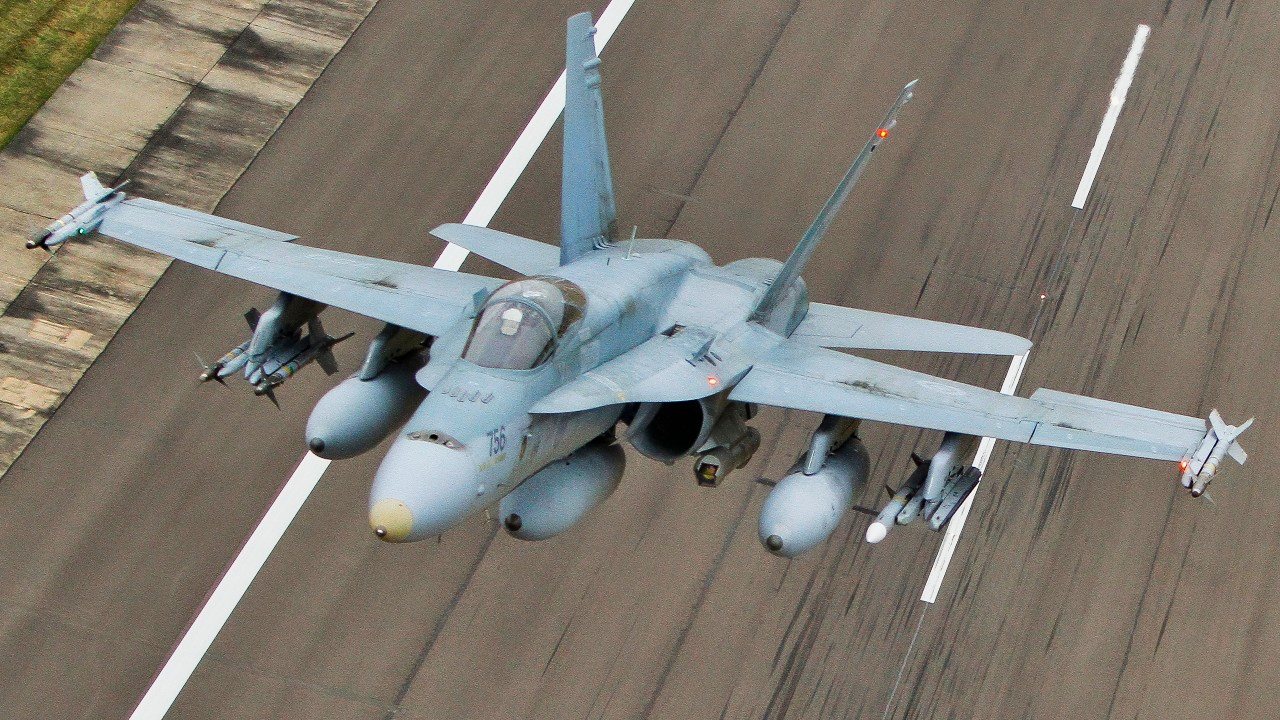The F/A-18 Hornet Is a U.S. Navy Fighter Jet Legend That Dominates
For forty years, the F/A-18 Hornet fighters have been central to the U.S. Navy's aerial capabilities.
Summary: For forty years, the F/A-18 Hornet fighters have been central to the U.S. Navy's aerial capabilities.

-Regarded as one of the most effective platforms, the Hornet has continually evolved with upgrades to maintain its competitive edge.
-Originating from the Navy’s VFAX program, the Hornet replaced older models like the A-7 Corsair II and complemented the F-14 Tomcat.
-It featured modifications for carrier operations and was easier to maintain than its predecessors.
-The Hornet saw combat from the mid-1980s, including significant roles in the 1991 Gulf War. Despite its last operational deployment in 2018, the Hornet remains a critical asset through its Super Hornet variant.
F/A-18 Hornet: Four Decades of Naval Dominance
For forty years, the U.S. Navy’s arsenal of F/A-18 Hornet fighters has remained the backbone of the service’s aerial fleet.
Many argue that this powerful platform is the most capable and contributive in service with the Navy today.
Throughout the years, consistent upgrades to the Hornet series of jets has helped the platform retain an edge over competitors.
Due to these significant upgrades, the F/A-18 Hornet fighters are expected to remain in service for decades to come.
The history of the F/A-18 Hornet:
The carrier-capable, multirole combat aircraft was derived from the Navy’s Fighter-Attack, Experimental (VFAX) program. Designed to produce a replacement airframe for the A-7 Corsair II, the McDonnell Douglas F-4 Phantom IIs and Douglas A-4 Skyhawk, the new platform would also have to complement the F-14 Tomcat.
By the early 1970’s, Congress mandated that the Navy develop and procure a more cost-effective platform than the Tomcat, which was quite pricey. Initially, the two prototypes proposed- the F-14X and a naval variant of the F-15, were deemed too expensive to fit the bill.
Ultimately, the service was allocated $34 million from the Air Force’s Lightweight Fighter Program to help develop a new Naval Air Combat Fighter, capable of performing both attack and fighter roles.

The YF-16 won the Air Force’s LWF competition, however, the Navy was doubtful that this prototype would be suitable for carrier service. After refusing to take on the F-16 derivative, the Navy tasked manufactures McDonnell Douglas and Northrop Grumman to create a new airframe better suited for the service but also based on the principles of the YF-17. The resulting F-18, later dubbed the “Hornet,” would take its first flight in the late 1970’s.
Largely derived from the YF-16, the Hornet featured some significant modifications. Catapult attachments and folding wings were added to the Navy’s platform, while landing gear was widened and tailhook were strengthened. The fighter’ wing was designed with a 20-degree sweep to the leading edge while its wings also feature full-length leading edge flaps. Unlike its carrier-capable predecessors, the Hornet is very easy to maintain, requiring half the maintenance time as its counterparts.
The Hornet was one of the first platforms to heavily use multifunction displays to allow pilots to switch from either fighter or attack roles with the press of a button. The platform was powered by General Electric F404 engines, which were cutting-edge at the time. The engine has proven to be a reliable, maintainable and operable energy source. In fact, if a problem arises with the F404 engine, it can be removed with a team of four in roughly 20 minutes.
Operational History
The F/A-18 Hornet first saw combat in the mid-1980’s, when F/A-18s were deployed in missions against Libyan air defenses during Operation Prairie Fire and in Operation El Dorado Canyon.
Hornets subsequently saw combat during the 1991 Gulf War, where they were credited with two kills against MiG-21s.
The last operational deployment of the Hornet occurred in 2018. Today, the Super Hornet continues to play a critical role for the Navy.
About the Author: Maya Carlin
Maya Carlin, National Security Writer with The National Interest, is an analyst with the Center for Security Policy and a former Anna Sobol Levy Fellow at IDC Herzliya in Israel. She has by-lines in many publications, including The National Interest, Jerusalem Post, and Times of Israel. You can follow her on Twitter: @MayaCarlin.
All images from Shutterstock.


